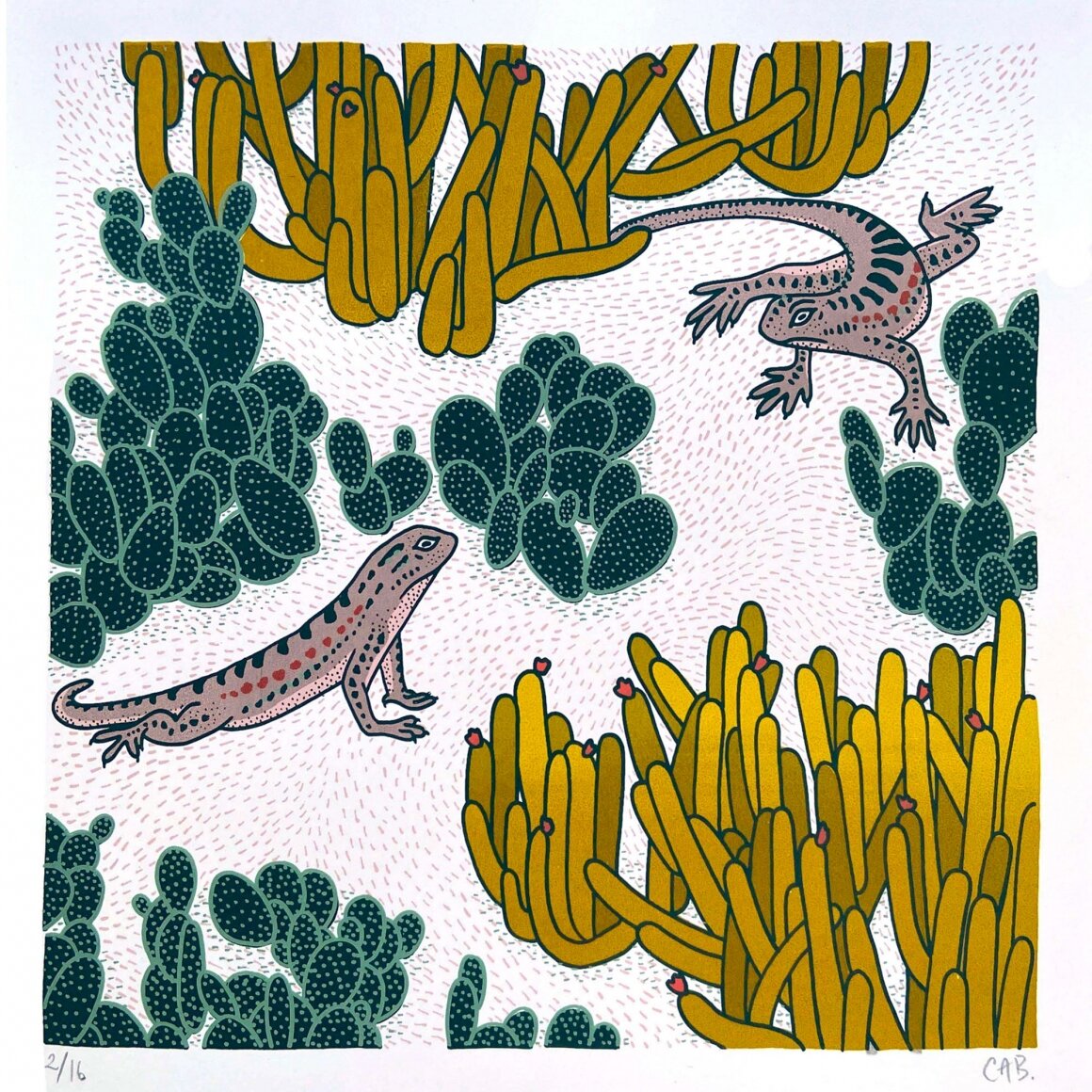On the Blue Shores of Silence
By Clara MacCulloch, UCSB x Lum Arts Writing Intern
Mary Heebner’s fine art book opens like an unwrapped Christmas present, secrets of the sea flowing out in deep blue swirls and shrouded figures.
Enclosed in a wooden frame and wrapped with a chemise of handmade linen paper, the flowing blue pigment follows the fluctuating rhythms of the sea. The first folio – The Sea / El Mar – opens to reveal dark shadows of blue and sandy brown, as if looking underneath the sea itself. On the left is the Spanish version of Pablo Neruda’s poem “The Sea.” On the right, lies the English translation by Alastair Reid. Twelve abstract paintings of the sea converge with twelve ethereal poems of the sea.
“The sense of a figure in a watery landscape gives a connection between the blood that courses through our veins and the rivers that flow out to the sea. The sea is all around us,” Heebner says.
Mary Heebner, El Mar #1
Mary Heebner, Soliloquio #7
One out of the 50 original handmade booklets, On the Blue Shore of Silence, is featured at the Betteravia Gallery in Santa Maria. Each folio is showcased in its own glass frame along with the display cases of the original and trade version of the book. Paintings created by local youth at Corazón Del Pueblo are framed in the adjacent wing of the government building.
The collaboration with the community arts center, Corazón Del Pueblo, came about in February 2020. In a workshop, Heebner led a small group of high school students in creating pieces inspired by the sea.
Neruda’s poetry was read throughout to inspire and move them. The finished artwork demonstrated a diverse array of vibrant colors on folded accordion paper and fluid watercolor lines in pictures of the ocean.
Public art is often serendipitous in its impact. When citizens enter the building to pay their taxes or obtain a marriage license, they now walk past words and images of the sea from voices young and old, both well-known and fresh.
“Art can serve as an outlet that brings diverse publics together,” Julia Rutherford Daly, gallery curator, says.
The shadowy figures hiding in Heebner’s abstract paintings are inspired by the many wooden figurines in Neruda’s home in Isla Negra. When Heebner visited his home in Chile on vacation, she was inspired by this house on the coast that seemed to blend in with the sea.
Mary Heebner, Sketch of Marie Celeste
Heebner returned from her trip and went straight to her studio. She tore nine pieces from a large sheet of paper and used each smaller piece to blot up some paynes gray spilt paint, then soaked them in water so that the pigment would bleed into the fiber. The next morning she saw figures within the blotches and got to work.
She added lines with Fijian bark cloth to give the shapes more distinction. It was then she realized her unconscious muse.
“I realized Pablo Neruda’s connection to the sea was not unlike my own,” Heebner says. “When I got home and made the paintings, I realized how much they were influenced by his collection.”
Heebner then reached out to Neruda’s favored translator, Alastair Reid. Working together, they sifted through Neruda’s work to compile poems of his omnipresent companion and constant inspiration, the sea.
“The poems illuminate the paintings, the paintings illuminate the poems.”
Mary Heepner, Sketch of Pablo Neruda
On the Blue Shore of Silence is on view at the Betteravia Gallery in Santa Maria.
Cover Image: On the Blue Shores of Silence: Pablo Neruda’s poems of the sea, a fine art book illustrated by Mary Heebner. In collaboration with Corazón Del Pueblo.









